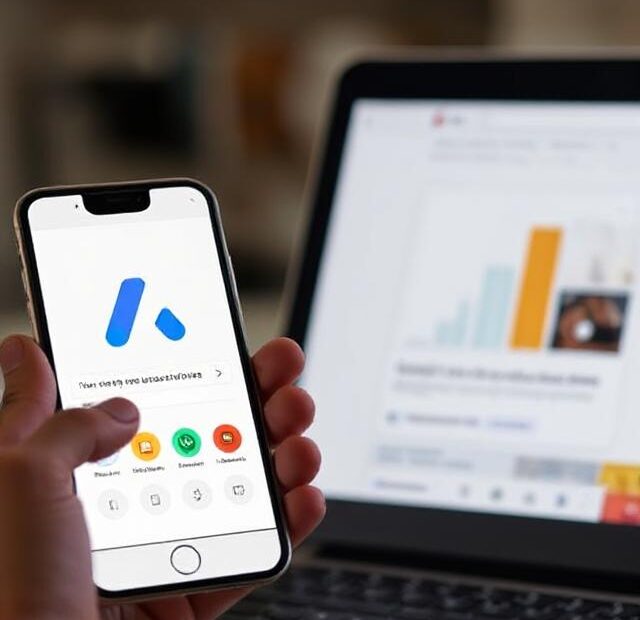Running a Google Ads campaign can be one of the fastest ways to drive targeted traffic to your business. But what happens when the clicks come in, yet the conversions don’t follow? Many advertisers face the frustrating challenge of high ad spend but low return.
If you’re wondering why your Google Ads are not converting, the good news is that there are clear reasons behind it—and even better, there are proven fixes. Let’s break down the most common problems and how to resolve them right away.
1. Poor Keyword Targeting
The Problem:
One of the top reasons why your Google Ads are not converting is weak keyword targeting. If you’re bidding on broad, irrelevant, or too generic keywords, your ads may attract the wrong audience. For instance, targeting “shoes” instead of “women’s running shoes size 8” can bring clicks from users who aren’t ready to buy what you’re selling.
The Fix:
-
Use long-tail keywords with high purchase intent
-
Apply negative keywords to filter out irrelevant searches
-
Regularly review search term reports to fine-tune targeting
Better keyword targeting ensures your ads reach people who are more likely to convert.
2. Weak Ad Copy
The Problem:
If your ad copy isn’t compelling or doesn’t clearly communicate value, users may click out of curiosity but fail to take action. Misleading or generic ad text can also damage trust.
The Fix:
-
Highlight unique selling points (USPs)
-
Use numbers or statistics to grab attention (e.g., “Save 30% Today”)
-
Include a strong call-to-action (CTA) like “Shop Now” or “Get a Free Quote”
-
Align ad copy closely with the searcher’s intent
Your ad copy should answer the searcher’s query and make it clear why your offer is the best option.
3. Poor Landing Page Experience
The Problem:
Even the best ad won’t convert if the landing page doesn’t deliver. Common issues include slow load times, cluttered layouts, or landing pages that don’t match the ad promise.
The Fix:
-
Ensure fast loading (under 3 seconds is ideal)
-
Match landing page content with ad messaging
-
Keep the design clean and mobile-friendly
-
Use clear CTAs and minimize distractions
A seamless landing page experience boosts trust and encourages visitors to take the desired action.
4. Targeting the Wrong Audience
The Problem:
If your targeting is too broad, your ads may reach people outside your ideal customer base. For example, running ads globally when you only ship within one country wastes budget and reduces conversions.
The Fix:
-
Refine audience targeting by demographics, location, and interests
-
Use remarketing to reach users who previously visited your site
-
Leverage in-market audiences for higher purchase intent
Narrow targeting ensures your ads are seen by people most likely to buy.
5. Low-Quality Score
The Problem:
Google assigns each keyword a Quality Score based on ad relevance, expected click-through rate (CTR), and landing page experience. Low scores mean higher costs and fewer impressions, reducing conversions.
The Fix:
-
Improve ad relevance by tightly aligning keywords, ads, and landing pages
-
Test multiple ad variations to boost CTR
-
Optimize landing pages for relevance and usability
Higher Quality Scores lower costs per click (CPC) and improve conversion opportunities.
6. Budget and Bid Strategy Issues
The Problem:
If your budget is too low or your bids are misaligned, your ads may not appear often enough—or they may show for the wrong clicks.
The Fix:
-
Review and adjust bid strategies (manual CPC, Target CPA, or Maximize Conversions)
-
Reallocate budget toward high-performing campaigns
-
Pause or refine underperforming keywords
Optimizing bidding strategies ensures you get the most out of your ad spend.
7. Ignoring Conversion Tracking
The Problem:
Without conversion tracking, you won’t know which campaigns, keywords, or ads are driving results. This leads to wasted budget and missed opportunities.
The Fix:
-
Set up Google Ads conversion tracking or integrate Google Analytics
-
Track not just purchases but also micro-conversions (form fills, sign-ups)
-
Regularly review data to identify high-performing segments
With accurate data, you can double down on what works and cut what doesn’t.
8. Lack of Testing and Optimization
The Problem:
Running ads without ongoing testing is like shooting in the dark. Ads lose effectiveness over time, and audiences change.
The Fix:
-
A/B test ad headlines, descriptions, and CTAs
-
Experiment with different ad formats (Responsive Search Ads, Display Ads, Video Ads)
-
Continuously analyze performance metrics and optimize accordingly
Regular optimization ensures your campaigns remain effective and competitive.
Final Thoughts
If you’re frustrated and asking yourself why your Google Ads are not converting, remember that every issue has a fix. From keyword targeting and ad copy to landing page experience and tracking, small adjustments can make a big difference in your results.
Google Ads success requires ongoing testing, optimization, and alignment between ads, audience, and landing pages. By addressing these common pitfalls, you’ll not only stop wasting ad spend but also start driving meaningful conversions that grow your business.
Also, you can learn more about Smart Budget for Your PPC Ads here.
